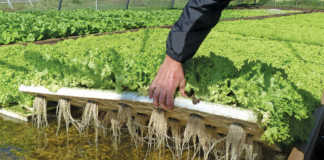There might not be anything wrong with the seedlings, but you need to know whether the seedling is hard, soft, active or semi-dormant. That way you can get the best use out of them. It’s better to tell the seedling grower what sort of plant you’re looking for, but this service is usually only provided to large growers.The ideal seedling is one that has just reached a suitable size but is still growing fast, with plenty of nutrients in the growing medium. Such a plant will continue its rapid growth in the land – and you’ll be amazed at how the roots grow into the soil a day later. These seedlings are essentially soft plants and respond to soft conditions. Such plants would not be a good idea when transplanted into climatic stress or where soil conditions are not ideal. If planted into hot soil with a waiting period before the irrigation reaches it, there will be either losses or a setback of the plant, as it tries to withstand the changed and unfriendly conditions. This results in an uneven stand right to the finish.
Soft plants must be planted in a pre-irrigated area and with great care in the late afternoon. Light irrigation is needed the next day to ensure the roots stay wet. The moist soil has a cooling effect on the leaves that touch it, providing a more favourable micro-climate.In hot areas, some seedling nurseries produce hardened seedlings to ensure they don’t get come backs due to plant mortality. They safeguard themselves in this way, as they have no control once the seedlings leave the nursery. It costs these nurseries more money to look after the seedlings for a few extra weeks while they harden. They benefit because their seedlings will survive some neglect and climatic extremes.When you know what kind of seedlings you have, or can provide ideal growing conditions for them, ask the nursery for unhardened seedlings. If your order is large enough, they should comply.
If you have no arrangement to this effect, you can ask the nursery if they can supply plants from a younger planting – provided that this doesn’t disrupt the order flow. You need to take responsibility for the type of plant you receive and apply appropriate transplant conditions for the seedlings. Many seedling growers have a huge problem with claims that the plants were faulty and losses were incurred. They often have to travel great distances to defend their product, only to discover gross negligence on the side of the farmer. – Bill Kerr (016 366 0616 or e-mail [email protected]) |fw













